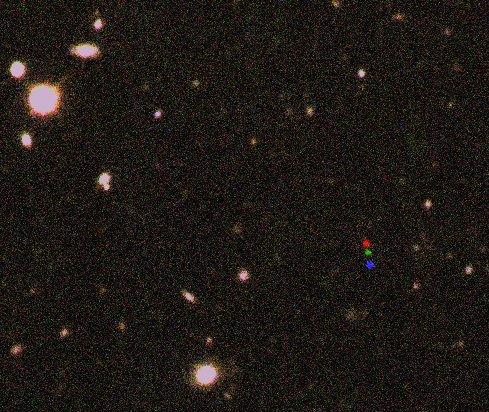Oort cloud - we are waiting for the mass of discoveries
Astronomers have discovered an object that looks like a dwarf planet that orbits around the Sun at an incredibly remote distance. This gives reason to believe that there are many more discoveries beyond Pluto. Until now, the only known object in this distant region of the solar system, known as the inner Oort cloud , was the dwarf planet Sedna , which was discovered about 10 years ago. In a study published March 26 in Nature magazine, scientists talk about a new object, which received the name 2012 VP113.

There is still the question of how 2012 VP113 and Sedna got to the inner Oort cloud. But researchers now believe that there may be hundreds of thousands of such objects, but they have not yet been discovered.
Where is the 2012 VP113?

')
When scientists talk about the observable solar system, they mean an area that extends from the Sun to the region behind Pluto called the Kuiper Belt. This belt occupies a region at a distance of 30 astronomical units (AU) from the Sun (Neptune's orbit) to 55 AU. Immediately beyond the Kuiper belt, at a distance of about 70 AU, the inner Oort cloud begins. At an even greater distance, starting from about 5000 AU, the Oort cloud becomes spherical and contains long-period comets (bends around the orbit around the Sun for a period of more than 200 years). 2012 VP113 lies in the area between the Kuiper belt and the spherical region of the Oort cloud. The shortest distance 2012 VP113 approaches the Sun is 80 AU, which is further than that of the more distant Sedna (76 AU). The size of 2012 VP113 is a little over a third of Sedna and is estimated at about 400 km in diameter.

The images above show the detection of 2012 VP113. The 2012 VP113 motion clearly stands out compared to the stationary background of stars and galaxies. Object in the image moves down.
Chad Trujillo of the Gemini Observatory in Hawaii, and Scott Sheppard of the Carnegie Institution of Washington DC, discovered 2012 VP113 using a ground-based telescope in Chile. In an interview with Nature, Trujillo said that they still do not know what 2012 VP113 consists of, but most likely the object is covered with ice, as it is very far from the Sun. The study of 2012 VP113 will help scientists better understand how objects hit the inner Oort cloud.
Additional useful materials:
1. The long-period comet Hale-Bopp .
2. Infographics of a 36-year voyager probe travel 1.
3. Presentation of the GAI them. PK Sternberg "The physical characteristics of dwarf planets."
4. Kuiper belt .
5. List of some long-period comets discovered since 1910.
6. Cosmos photos from NASA.
Source: https://habr.com/ru/post/217267/
All Articles